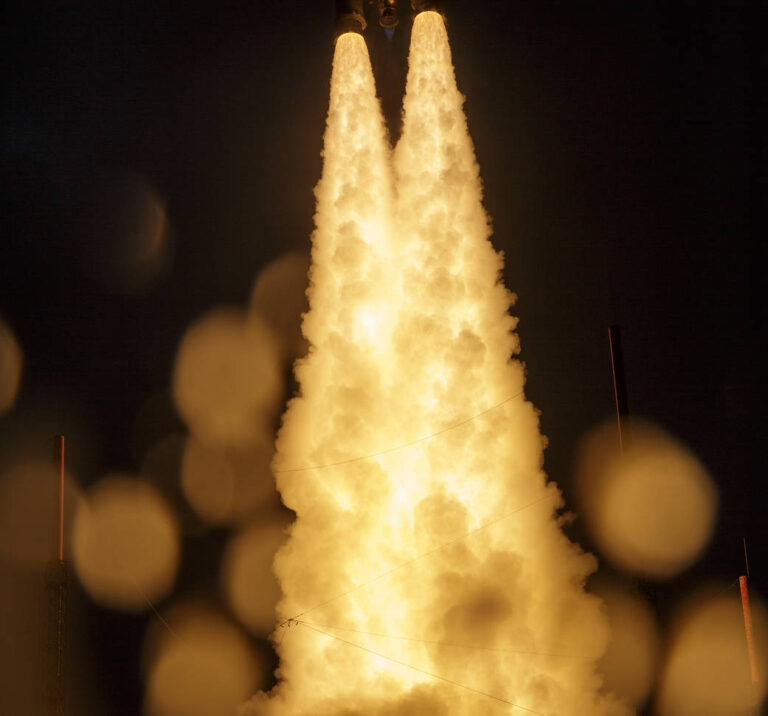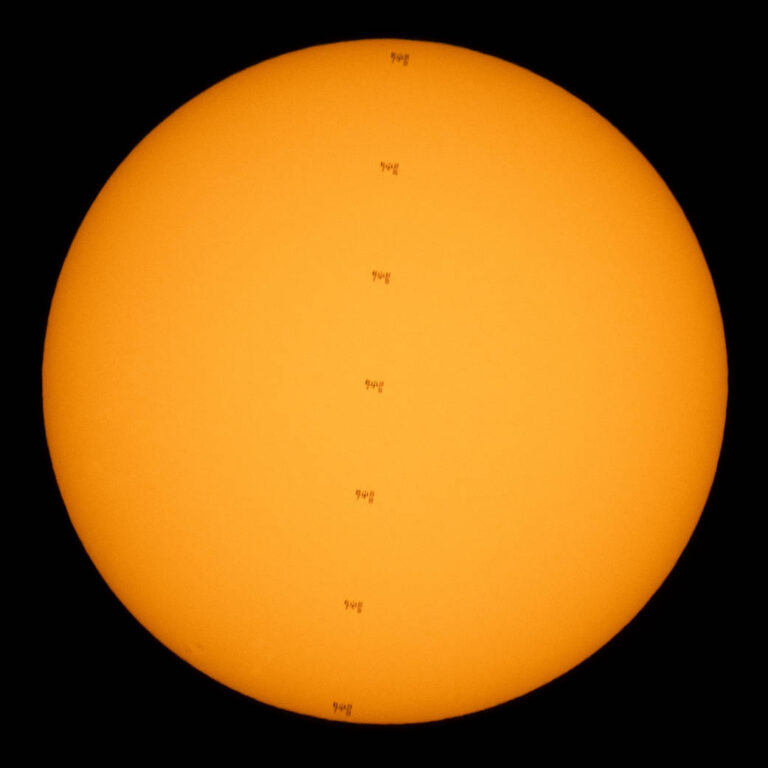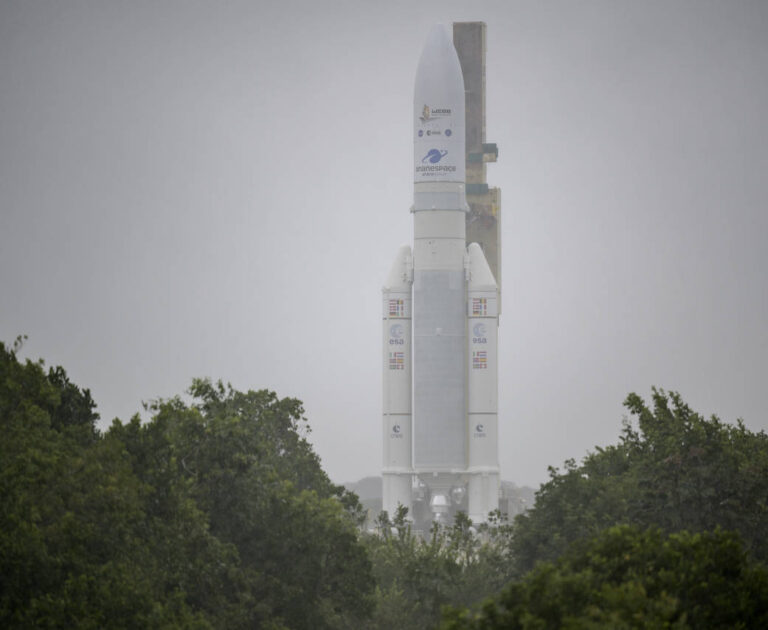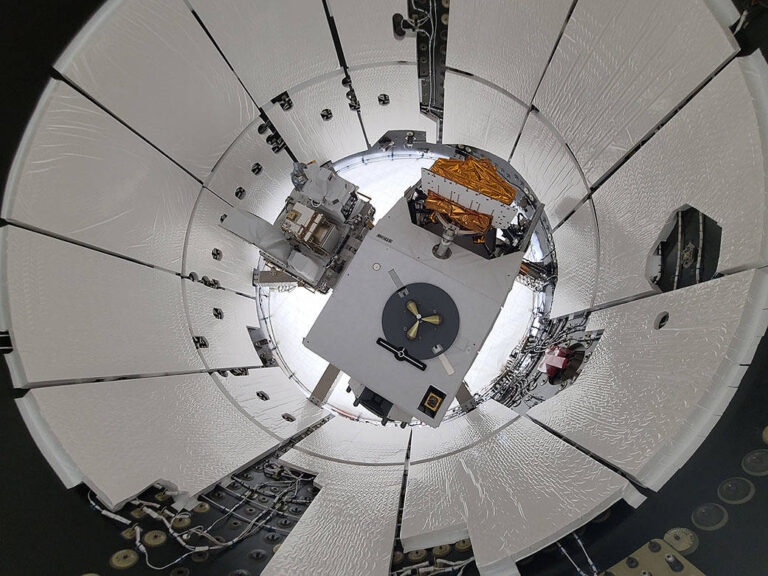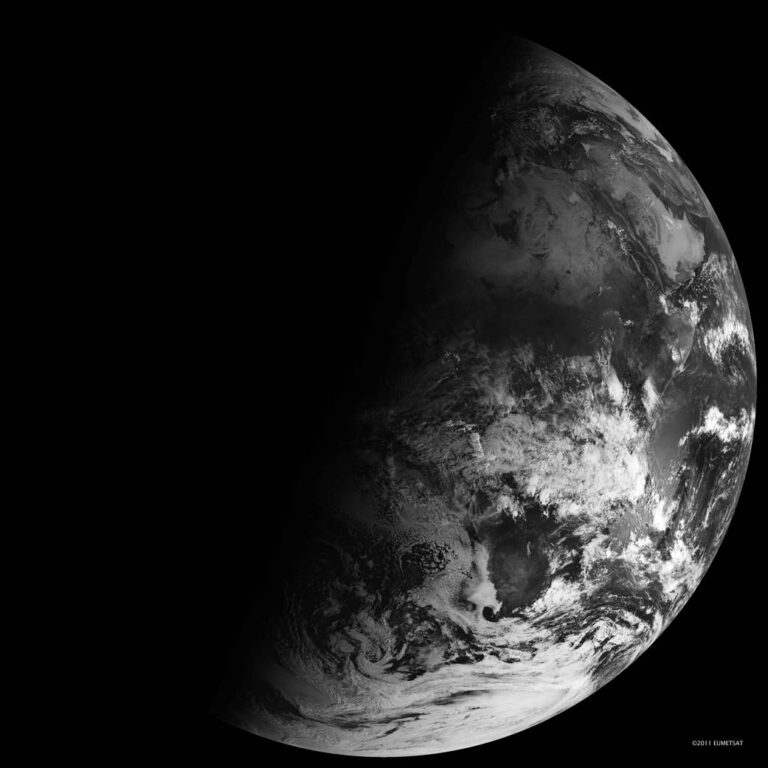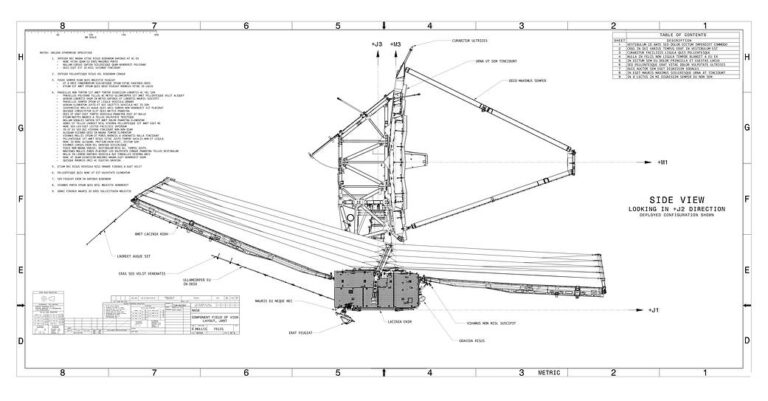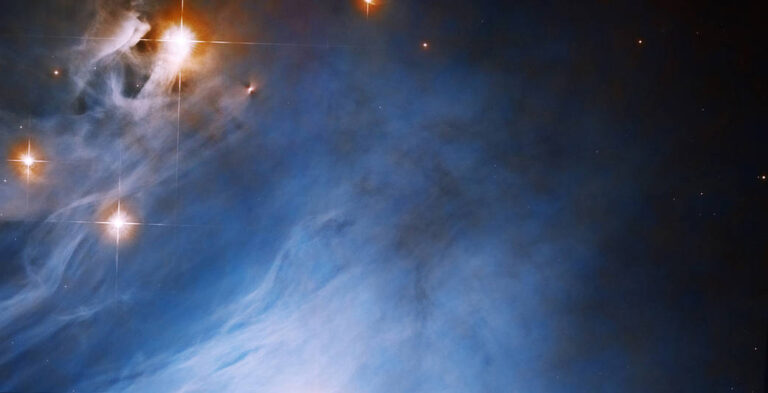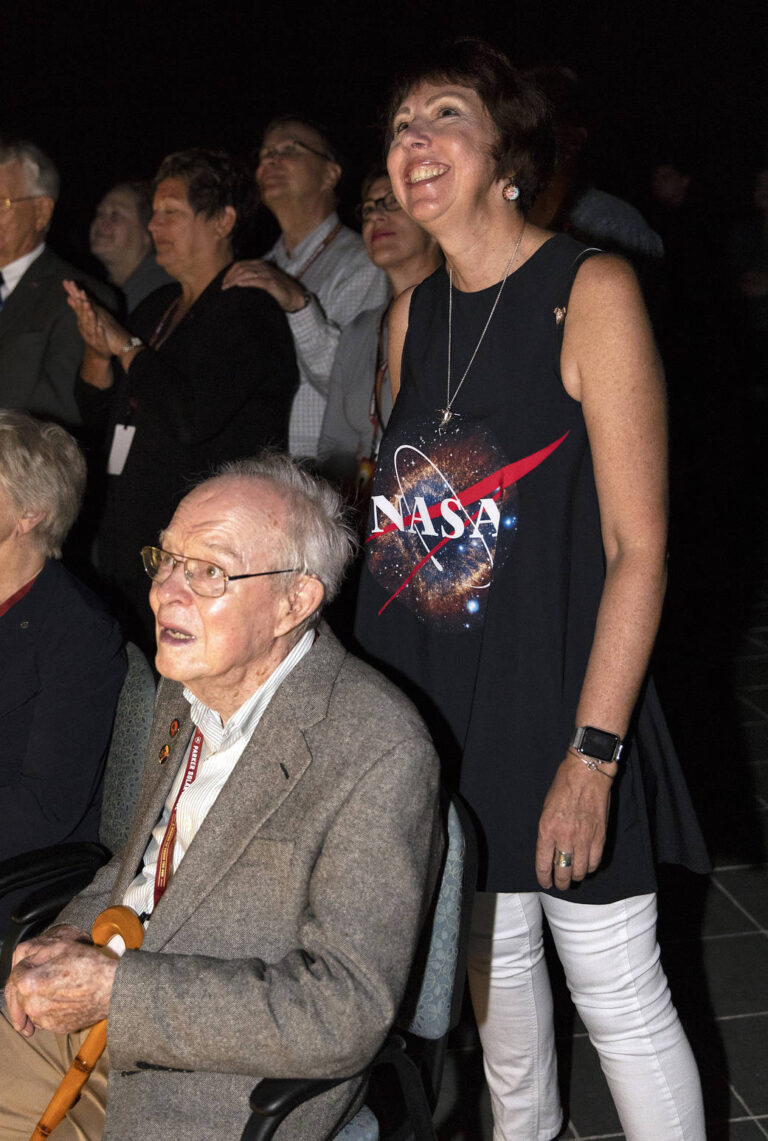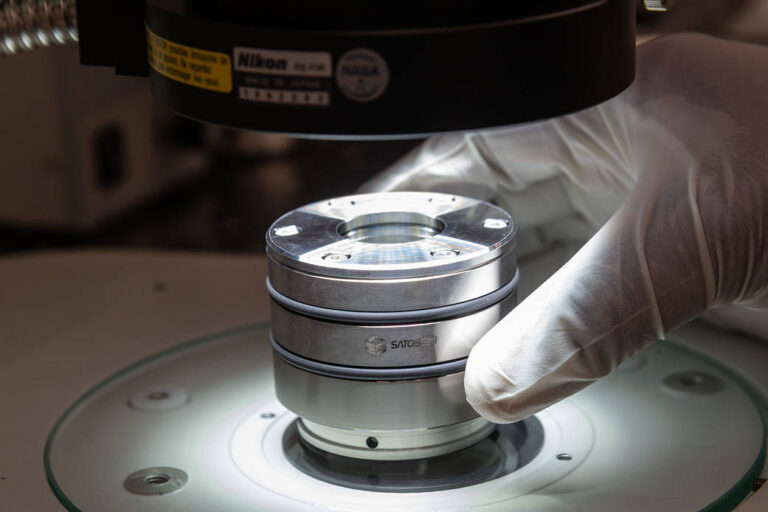詹姆斯·韦伯望远镜发射时照亮了天空
NASA’s James Webb Space Telescope, or JWST, launched aboard Arianespace’s Ariane 5 rocket on Saturday, Dec. 25, 2021, from the ELA-3 Launch Zone of Europe’s Spaceport at the Guiana Space Centre in Kourou, French Guiana. JWST is an infrared telescope with a 21.3 foot (6.5 meter) primary mirror. The observatory will study every phase of cosmic history—from within our solar system to the most distant observable galaxies in the early universe. 2021年12月25日星期六,NASA的詹姆斯·韦伯太空望远镜(JWST)搭载阿丽亚娜航天公司的阿丽亚娜5型火箭,从位于法属圭亚那库鲁的圭亚那航天中心的欧洲航天港的ELA-3发射区发射升空。JWST是一款带有21.3英尺(6.5米)主镜的红外望远镜。天文台将研究宇宙历史的每个阶段——从我们的太阳系内部到早期宇宙中最遥远的可观测星系。 Over about two weeks, NASA will provide broadcast coverage, media briefings, and other updates on major deployment milestones for the James Webb Space Telescope, the world’s largest and most powerful space science telescope. 在大约两周的时间里,NASA将提供广播报道、媒体简报和其他有关詹姆斯·韦伯太空望远镜重大部署里程碑的更新。詹姆斯·韦伯太空望远镜是世界上最大、最强大的太空科学望远镜。 Broadcasts of milestone events will air live on NASA TV, the NASA app, and the agency’s website. 里程碑事件的广播将在NASA电视台、NASA应用程序和NASA网站上直播。 Image…

